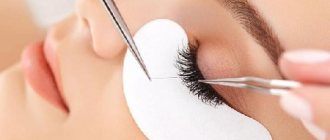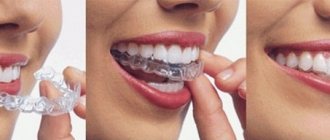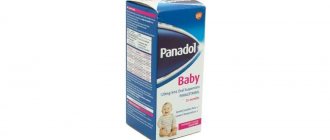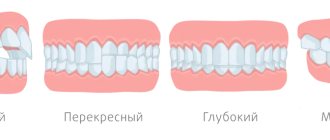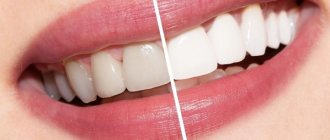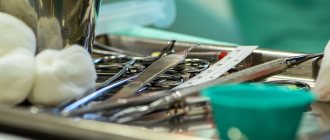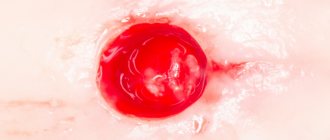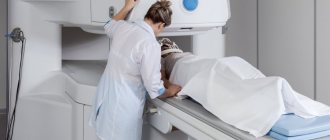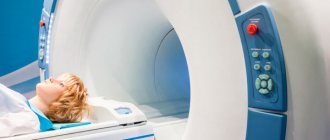What is Air Flow cleaning and how is it done?
Air Flow teeth cleaning is an effective dental procedure that allows you to remove bacterial and pigmented plaque, soft and hard deposits from the surface of your teeth. To achieve the desired result, a special device “Air Flow” (made in Sweden) is used, which gave the name to the procedure.
The Air Flow device creates a directed flow of air, water and fine abrasive particles. Applied to the surface of the teeth under high pressure, it delicately removes (cleanses) visible plaque and deposits from the surface of the teeth. As a rule, sodium bicarbonate is used as an abrasive - ordinary soda.
Teeth cleaning using the Air Flow system is carried out only in a dental setting and includes several stages.
- Treating lips with Vaseline.
- Position of the saliva ejector in the patient's mouth.
- The placement of a device in the mouth to collect excess flow of water, air and fine particles.
- Treatment of each tooth with a high-pressure stream at an angle of 30 - 600.
- Grinding of teeth using leveling paste.
- Treatment of teeth with a special fluoride-based gel to strengthen tooth enamel and reduce its sensitivity.
During treatment with a directed flow, special attention is paid to hard-to-reach places - interdental spaces, periodontal pockets. Unable to be cleaned during daily oral hygiene, they contain large amounts of plaque and deposits. But thanks to the penetrating power of Air Flow, they can be removed without much difficulty.
The total duration of the procedure is from 40 minutes to 1 hour, which depends on the condition of the teeth and the complexity of the problem.
How is the procedure done?
The procedure lasts about 30 minutes. During this time, the doctor prepares the patient and the equipment - gives the person protective glasses and a cap, installs special devices for isolating the gums and mucous membranes, connects a dental vacuum cleaner and saliva ejector.
The doctor treats each tooth, making circular movements near the enamel, but without touching it. In this case, the doctor can regulate the strength of the flow of compressed air and abrasive particles, and the angle of inclination of the hardware tip in relation to the surface being treated. The jet is directed at the tooth, but not at the gum tissue. Stone particles, as well as residual cleaning solution, are removed using special dental equipment.
The last stage consists of polishing the teeth with a special brush with an abrasive paste, which makes the surface perfectly even and smooth. Additionally, a protective varnish with fluorine is applied to strengthen the enamel.
Usually the patient does not experience any unpleasant or painful sensations, but if any discomfort occurs, the dentist may apply local anesthesia.
Cleaning with braces
Quite often, treatment with braces makes it difficult to thoroughly clean teeth. As a result, plaque and deposits can accumulate around orthodontic structures, for which the Air Flow system is ideal for removing. A targeted fine stream will gently clean the surface of the teeth and help maintain the necessary oral hygiene during orthodontic treatment.
The appearance of bacterial and pigment plaque, soft and dense deposits inevitably leads to the development of caries. Its progression provokes the appearance of such serious dental diseases as periodontitis and pulpitis - in this case, tooth loss is inevitable. Professional teeth cleaning using the modern Air Flow device helps stop the development of possible complications.
Benefits of Air Alow Cleaning
Air Flow costs less than alternative whitening methods, such as laser. However, an affordable price is not the only advantage of professional cleaning:
- There is a complete absence of unpleasant sensations, which is achieved due to the softness of the jet and the relative harmlessness of the components of the mixture.
- To completely clean your teeth of plaque, one visit to the Ilatan clinic is enough.
- The naturalness and harmlessness of the mixture is a guarantee of complete safety.
- Pathogenic microflora cannot multiply in the oral cavity for a long time.
- Along with cleansing, the dental surface is polished, as a result of which it becomes smooth and shiny.
- The enamel does not suffer at all and demineralization does not occur, and all existing fillings are preserved.
- Age spots on enamel simply disappear under the influence of the “magic” jet.
Indications for the procedure
Professional oral hygiene using a sandblasting machine is recommended in the following cases:
- Visible darkening of the enamel color.
- The presence of pigment plaque and deposits on the surface of the teeth.
- Smoker's plaque
- Accumulation of plaque and deposits in the interdental space and periodontal pockets.
- The presence of braces, bridges and other dental structures that make hygienic cleaning of the oral cavity difficult.
- Upcoming procedure for dentures or teeth whitening.
Important to remember! The use of Air Flow is advisable for aesthetic, therapeutic and preventive purposes. Removing dental plaque will help restore your teeth to an attractive appearance and prevent the development of caries and serious dental diseases.
Contraindications
Removing plaque and deposits using the Air Flow device is considered a minimally invasive procedure that is well tolerated by the human body and does not harm its health. And only in rare cases is the procedure impossible. The following conditions and pathologies are such contraindications.
- The patient has not reached 15 years of age.
- Following a salt-free diet.
- Chronic respiratory diseases.
- Increased sensitivity of tooth enamel.
- Individual allergic reactions to the manipulations performed or the composition of the abrasive powder for cleaning.
- Pregnancy period.
Important to remember! Professional cleaning of the oral cavity with Air Flow is carried out only after prior consultation with a dentist. In case of chronic diseases, consultation with your doctor is necessary.
Additional Information
When the cleaning mixture acts on tooth enamel, the protective film is removed from it. Please note that it takes several hours for it to fully recover. That is why it is important to strictly follow all doctor’s recommendations after professional hygiene. Do not smoke, do not drink coffee and do not eat solid foods - these rules are quite feasible and mandatory for everyone who has undergone such an operation. You may need to change your toothbrush and buy mouthwash.
Whitening using the Air Flow method, the price of which is affordable for all people, should be carried out annually. This will preserve the natural color of the tooth enamel and rid the oral cavity of contamination with pathogenic microflora. It is noteworthy that the effect lasts for a long time, but this is provided that the patient strictly followed all the doctor’s instructions. The procedure can be carried out in combination with ultrasonic cleaning if the doctor sees that Air Flow alone clearly cannot cope with hardened deposits.
How is Air Flow different from ultrasonic cleaning?
The effectiveness of the Air Flow technique is based on the abrasive properties of a fine flow that cleans the surface of the teeth. While the success of ultrasonic teeth cleaning is built on the ability of ultrasonic waves to destroy plaque, deposits and tartar due to a certain vibration frequency. Both methods are classified as mechanical teeth cleaning and are recommended for maintaining oral health.
In order to understand the difference between Air Flow and ultrasonic cleaning, let's look at the main advantages and disadvantages of these methods.
Benefits of Air Flow
- Minimally invasive.
- Removal of pigment, bacterial plaque and soft deposits.
- Ability to clean hard-to-reach places.
- Effective cleaning of teeth with braces, bridges and implants.
Flaws
- The method is not recommended for hypersensitive teeth.
- Air Flow will not remove tartar.
Benefits of ultrasonic cleaning
- Minimally invasive.
- Removal of pigment and bacterial plaque.
- Removal of soft and hard deposits.
- Tartar removal.
- Ability to clean hard-to-reach places.
Flaws
- The impossibility of using ultrasound in the presence of braces, implants and other dental structures.
Thus, Air Flow can be compared to “thorough cleaning”, and the use of ultrasound to “spring cleaning” in the oral cavity. Both methods differ not only in the method of exposure, but also in the depth of cleaning.
20% discount on prof. hygiene
Moscow
What's better?
Ideally, it is necessary to combine ultrasonic cleaning with the Air Flow procedure. The first will destroy hard deposits and tartar, which is especially important for hard-to-reach places, and the finely dispersed flow will delicately remove soft deposits and plaque.
Which is better is a difficult question. It all depends on the complexity of the problem, the individual characteristics of the enamel and the presence of contraindications. Therefore, an accurate answer can only be given after diagnosing the general condition of the oral cavity.
Note! The Air Flow procedure and ultrasonic cleaning are not teeth whitening. During these procedures, only slight whitening of the enamel is possible, by 1–2 tones, which is achieved by removing visible pigment plaque.
How does the procedure take place?
As we have already said, this method allows you to effectively remove a not too thick layer of plaque and tartar, so if you have massive supra- and subgingival dental plaque, the dentist will first do ultrasonic cleaning of the deposits. And only after that, with the help of Air flow, it will remove all remnants of plaque, pigment spots from the teeth, and polish the teeth.
The duration of the procedure depends on the number of teeth, the degree of their contamination, and the density of plaque. But on average it ranges from 30 to 60 minutes. First, the patient's lips are lubricated with Vaseline to prevent them from drying out, and a saliva ejector is placed under the tongue. You may feel slight pain during the procedure if you have sensitive tooth necks.
Air flow teeth cleaning requires protecting the patient's eyes from microbes that are carried out of the mouth by the air flow, as well as from accidental ingress of abrasive particles. Therefore, patients wear safety glasses before the procedure, and wear a cap to keep their hair clean.
Air flow teeth cleaning: video procedure
Important: in the first 3 hours after the procedure, you will not drink coffee and tea, smoke or eat foods that stain tooth enamel (for example, wine, beets...). It would be ideal if you purchase an electric toothbrush to maintain the whiteness of your teeth. This brush is especially necessary for smokers and strong tea/coffee lovers.
Air Flow during pregnancy
Pregnancy is a relative contraindication to the procedure. The problem is that during this period, calcium metabolism in a woman’s body is disrupted. As a result, tooth enamel loses its protective functions, becomes more sensitive, and brushing can cause it to thin out, which can trigger the development of dental diseases. Therefore, the Air Flow procedure is not recommended for pregnant women.
“Air Flow” plaque removal and whitening
– a procedure for removing dental plaque (soft) using a powerful, precisely directed air flow, which contains a special cleaning mixture in the form of ultra-fine powder.
This technique allows you to completely clean the enamel not only of plaque, but also of dark spots resulting from drinking coffee, smoking or under the influence of other factors. Due to the fact that as a result of the Air Flow procedure, teeth become 1-3 shades lighter, it can easily be mistaken for a whitening procedure.
Cleaning occurs even in the most difficult to reach places, for example, in the gingival sinuses and between the incisors. At the same time, the dentin remains safe, since the flow power is selected individually for each patient. The method was first used by the Swiss company EMS, and since then it has been gaining more and more fans.
Benefits of the procedure
- Very high-quality cleaning of tooth surfaces from food plaque, stained stains and bacterial biofilm
- Cleaning occurs over the entire surface of the enamel, including in the most inaccessible places.
- Along with cleaning, the device polishes the enamel.
- Thanks to thorough cleaning of the enamel, it noticeably brightens, or rather the natural color of the tooth enamel returns; the tooth enamel becomes 1-3 shades lighter than before the procedure.
- Promotes better and more efficient treatment and dental prosthetics.
- It is a real preventive measure for caries, since plaque is an excellent environment for caries-forming bacteria.
- After cleaning, your breath is noticeably fresher.
Operating principle of the Air Flow device
In short, the equipment used to carry out Air Flow is a special sandblasting mechanism that allows you to deliver the finest dental cleaning powder in the desired direction and under the required pressure.
An analogue from everyday life can be cleaning the oral cavity with soda. The big difference is that the powder used in the Air Flow procedure is a mixture of safe and effective cleaning agents with a pleasant citrus aroma, and the strength, depth and focus of hardware cleaning cannot be compared with manual cleaning.
How does the whitening and cleaning procedure work?
The patient remains in the dentist's chair for no more than half an hour. Before starting the procedure, the doctor must find out whether the patient has a tendency to bleeding gums , what is his individual degree of enamel sensitivity, whether the patient has contraindications to the procedure, etc. Then an individual selection of the power and direction of the air stream is carried out.
Since the technique does not allow for the removal of tartar, it may be necessary to pre-clean your teeth with ultrasound, and only then with powder-air cleaning. Sometimes it may be necessary to coat it with a special fluorine-containing varnish to fix the effect and strengthen the enamel.
After cleaning Air Flow, it is strictly forbidden to eat or drink for some time. It is also strongly recommended not to expose your mouth to coloring agents for the next few hours.
Recommendations after the procedure
For the first time after professional Air Flow cleaning, you should limit the consumption of excessively cold, hot, sweet, spicy and other irritating foods. In this case, the positive result achieved during the procedure will be noticeable immediately. To maintain it for a long time, you must adhere to the following recommendations.
- Use medicated toothpaste and a soft-bristled brush for daily oral hygiene.
- To thoroughly clean teeth and hard-to-reach places, regularly use rinses, flosses, and brushes.
- Repeat the procedure at least once a year.
In this case, it is necessary to regularly, once every 6 months, undergo a preventive examination by a dentist.
What's not allowed?
After thoroughly cleaning your teeth, you should reconsider your diet and bad habits. The following list should be banned.
- Eating excessively hard foods.
- Abuse of products with a high content of coloring substances (both natural and artificial).
- Eating foods high in acids.
- Tea, coffee, chocolate, red wine.
- Cigarettes.
If you don’t want to give up this list, then you need to be prepared for the fact that very soon a new pigmented plaque will form on the surface of the tooth enamel, and it will become more sensitive.
The first time after the procedure, there may be unpleasant painful symptoms, increased sensitivity of the teeth and slight bleeding of the gums. If you follow all the dentist’s recommendations, they disappear after 1 – 2 days.
Cost of the procedure
The average cost of the procedure is 5,000 rubles. The price of the service is determined based on the complexity of the problem with which the patient came to the dentist, the total volume of dental work and the price segment of the clinic. Quite often there are hot discounts on the Air Flow procedure.
Author: Elena Kopylova Dentist-therapist, endodontist. Work experience more than 8 years.
The information is for reference only. Before treatment, consultation with a doctor is necessary.
